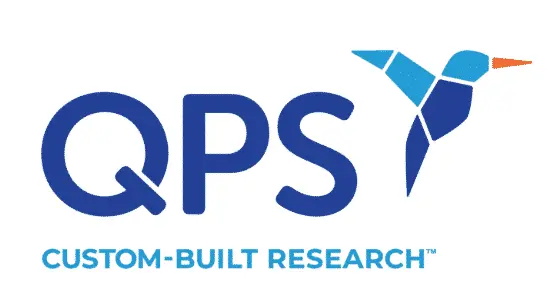Gene therapy holds great promise for the treatment of a wide range of diseases and conditions. By manipulating the genetic material within cells, gene therapy aims to correct or compensate for genetic defects, restore cellular function, and ultimately alleviate the symptoms or eradicate the underlying causes of various disorders. What diseases or conditions can gene therapy treat? Keep reading for a brief overview.
Applications of Gene Therapy
Gene therapy involves the delivery of therapeutic genes into target cells or tissues to correct genetic abnormalities or modulate gene expression. Over the past few decades, significant progress has been made in the development of gene therapy techniques. What diseases or conditions can gene therapy treat? For now, gene therapy has the potential to treat a range of diseases, discussed below.
Severe Combined Immune Deficiency (SCID)
Severe Combined Immune Deficiency (SCID) is one of the earliest genetic disorders to be effectively treated through gene therapy. Techniques have focused on isolating and correcting mutations in the patient’s hematological stem cells and then transplanting those functional cells back into the patient. Initial clinical trials faced challenges when the viral vector used to deliver these modified stem cells triggered leukemia in certain patients, but new trials utilize safer viral vectors that are significantly less likely to cause cancer.
Adenosine Deaminase (ADA) Deficiency
Adenosine Deaminase (ADA) deficiency is another condition that can be treated by modifying a patient’s own blood stem cells outside the body. Viral vectors, including lentiviruses, are used to deliver functional ADA genes into the stem cells, and these genetically modified stem cells are then transplanted back into the patient’s body, where they can produce the ADA enzyme.
Hereditary Blindness
There are a number of gene therapy techniques that can be used for different types of hereditary blindness. Many of these techniques are successful because the retina is partially protected from the immune system and viruses in the eye cannot travel to the rest of the body. This has allowed for success in gene therapy that utilizes an adeno-associated virus (AAV) as a vector to carry genes that restore or enhance the function of light-sensing cells in the eye.
Hemophilia
Gene therapy for hemophilia involves introducing functional genes through viral vectors that produce the clotting factors deficient in hemophiliacs. Often using AAV as the viral vector, these functional genes are delivered to the liver, where clotting factors are naturally produced. The goal of this approach is to reduce or eliminate the need for frequent clotting factor infusions and prevent the frequency or severity of bleeding episodes in patients with hemophilia.
Blood Disease
Patients with beta-thalassemia, a blood disorder caused by a defect in the beta-globin gene, have insufficient red blood cell counts and often rely on blood transfusions to survive. A 2007 study found that collecting stem cells from a patient’s bone marrow, treating those stem cells with a retrovirus, and returning the modified stem cells to the patient’s body was a successful method of increasing the patient’s healthy red blood cell count. Similar techniques can treat related blood diseases, such as sickle cell disease.
Fat Metabolism Disorder
Gene therapy for fat metabolism disorders, such as familial hypercholesterolemia, focuses on delivering genes that regulate cholesterol metabolism. Viral vectors, including AAV, are utilized to introduce functional copies of the affected genes into liver cells, helping restore proper cholesterol processing and metabolism. This also helps stops the concentration of fat from reaching levels that could be toxic.
Cancer
Gene therapy holds significant potential to fight cancer by targeting tumor cells or modulating the body’s immune response. Researchers have had success using the T-VEC treatment, a technique wherein a modified herpes simplex 1 virus is injected directly into a patient’s tumors as a method of treating melanoma when it has spread to the rest of the body.
A drastically different technique that has shown clinical promise is for patients with leukemia. In one trial, researchers removed the patient’s immune cells, treated them with a genetically altered virus, and returned the immune cells to the patient. In this trial, 26 of the 59 patients experienced complete remission from their leukemia.
Parkinson’s Disease
Gene therapy approaches for Parkinson’s disease involve delivering therapeutic genes into those regions of the brain that are affected by the disease. One technique that has shown promise involved using a retroviral vector to introduce three genes into a specific area of the brain, allowing cells that do not usually produce dopamine to do so. Restoring this dopamine function was linked to an improvement in motor symptoms in patients.
Duchenne Muscular Dystrophy (DMD)
One of the conditions that may be added to this list next is muscular dystrophy. On June 22, 2023, the Food and Drug Administration (FDA) approved Elevidys, the first gene therapy treatment ever approved for Duchenne Muscular Dystrophy (DMD) in pediatric patients 4 to 5 years of age.
Elevidys is a recombinant gene therapy, which uses a single infusion of genetically modified viruses. These viruses carry a gene that produces a miniature version of the muscle-protecting protein called dystrophin. The clinical benefit of Elevidys has not yet been established, and as a condition of the treatment’s approval, the FDA is requiring a clinical study to determine the benefit. Researchers are cautious but hopeful that this ongoing trial will get the field one step closer to finding effective gene therapy treatments for DMD and, eventually, other forms of muscular dystrophy.
What Diseases or Conditions Can Gene Therapy Treat?
The list of conditions above is not exhaustive, and the field of gene therapy continues to evolve. Despite the inherent risks of gene therapy, the potential rewards are immense. Researchers continue to explore gene therapies for serious conditions and expand the hope and promise of these potential cures. At QPS, we’re proud to have supported cell and gene therapy product development since 2003.
QPS is a GLP/GCP-compliant CRO delivering the highest grade of discovery, preclinical, and clinical drug development services. Since 1995, it has rapidly expanded from a bioanalysis shop to a full-service CRO with 1,100+ employees in the US, Europe, India, and Asia. Today, QPS offers expanded pharmaceutical contract R&D services with special expertise in neuropharmacology, DMPK, toxicology, bioanalysis, translational medicine, and all phases of clinical development. QPS has CLIA-certified and GLP-compliant laboratories ready to fast-track gene therapy, RT-qPCR/QPCR, serological assays, and vaccine development programs. An award-winning leader focused on bioanalysis and clinical trials, QPS is known for proven quality standards, technical expertise, a flexible approach to research, client satisfaction, and turnkey laboratories and facilities. For more information, visit www.qps.com or email info@qps.com.








